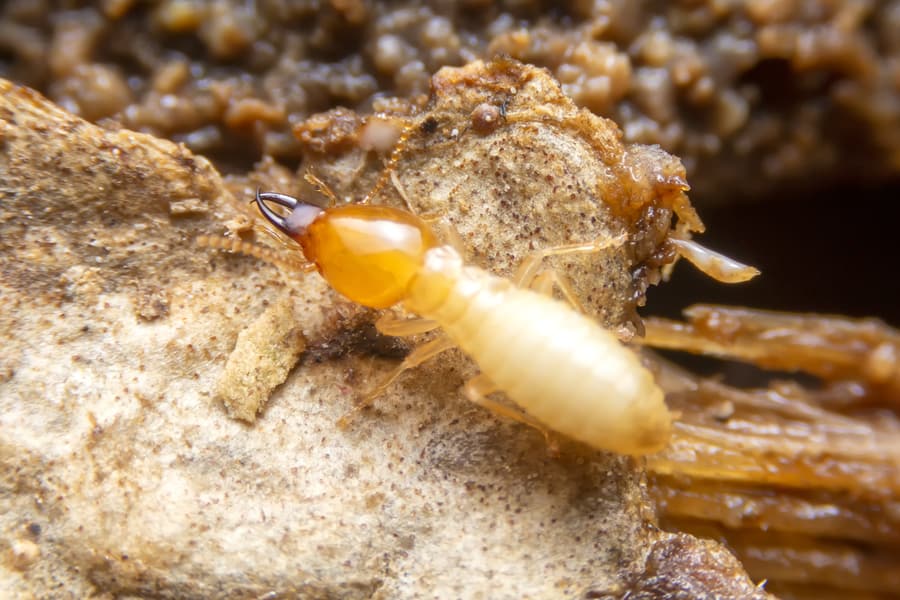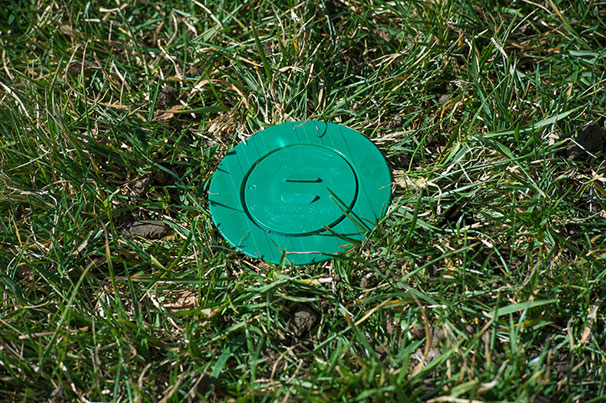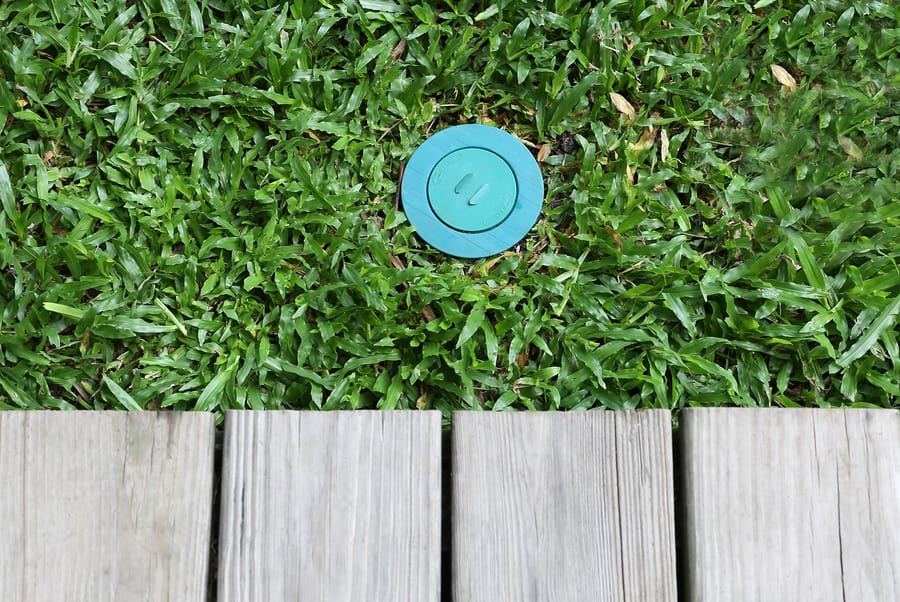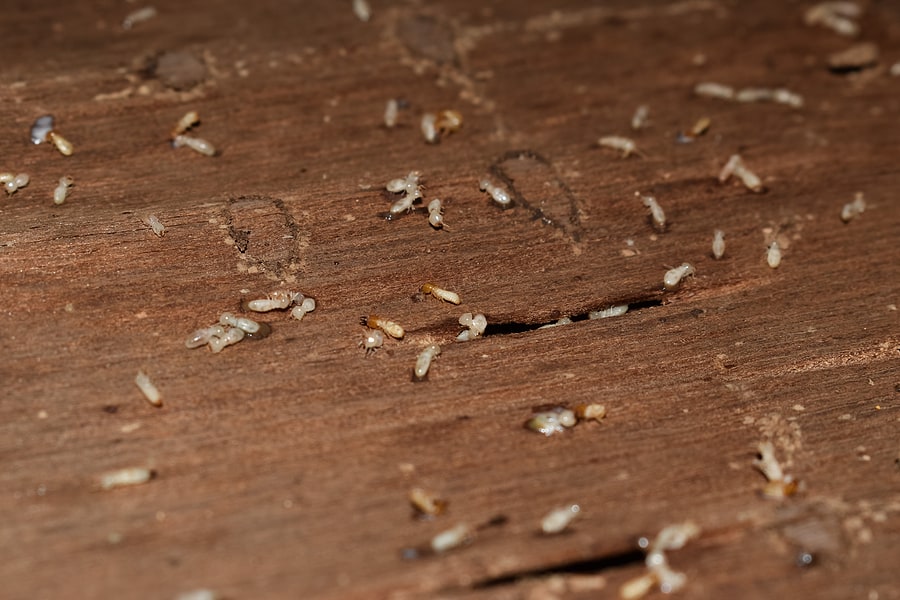
Oct 27, 2023 | Florida Termite Control
Subterranean termites eat wood from the inside out, often hiding and going undetected until severe damage is done. These termites will often infest homes by entering through stucco, slab foundation, and other hidden areas with access to the structure. The best way to prevent these termites is to understand their signs of infestation so you can begin to eliminate them early before the infestation gets out of hand.
Termite Signs in Homes
Here are 5 signs of subterranean termites in homes:
- Swarms: An early sign that subterraneans are in your home is spotting termite swarms in your neighborhood. These swarms can sometimes be confused with flying ants. Swarms will typically emerge in the spring or early summer to reproduce and establish a new colony. If you see these swarms, it’s a good indicator that a colony is looking for a new place to build their nest.
- Mud Tubes: Subterranean termites build mud tubes to travel back and forth between your home and their nest. You’ll find these on walls, ceilings, floors, exterior surfaces, on the sides of slabs, and are usually the size of a pencil. These tubes help protect them from damage and predators, also allowing them to accumulate moisture to survive.
- Noises: While it can be difficult to hear termite noises, it is possible! If a colony is large and established, you could hear a faint clicking or knocking sound behind your wall or in other voids. This noise is the sounds soldier termites make when they are banging their heads against wood or vibrating their bodies to indicate to the rest of their colony that there is danger.
- Hollow Wood: If you tap on wooden surfaces of your home and hear a hollow or paper sound instead of a solid thud, this is a sign that a termite colony could be established. Additionally, if you spot blistering or bubbling paint, especially near the window and door trim, could be another indication termites are inside.
- Wood Damage: Floor, door, and window damage can indicate that termites have infested. Typical termite wood damage includes floors that buckle or sag and difficulty closing doors or windows.
Consider Termite Treatments
If you notice any of the above signs in your Florida home, it’s best to contact your local termite control company as soon as possible. These professionals will thoroughly inspect your home, provide you with a termite treatment plan for the existing termite colony, and recommend the best prevention plan moving forward to avoid another infestation.

Jun 16, 2023 | Florida Termite Control
Living in South Florida can come with many perks, including lots of sunshine and beautiful ocean views. Unfortunately, it can also come with termites! These silent destroyers can cause significant damage to your home from the inside out. There are several treatment options out there to help keep termites under control, including the Sentricon Always Active® system. Here is more information on subterranean termites, along with ways to prevent and eliminate them.
What are Subterranean Termites?
Let’s talk about these stealthy troublemakers! Subterranean termites are the most common type of termite found in residential areas. They thrive in moist soil and create underground colonies, where they build intricate tunnel systems to access sources of food. Their damage can go unseen for years, hence the nickname, Silent Destroyers.
How to Prevent Subterranean Termites:
- Remove Moisture from Home: Subterranean termites love moisture, so keep an eye on areas prone to dampness, such as crawlspaces and basements. Ensure proper ventilation and address any leaks or water issues promptly. By eliminating excess moisture, you’re making your home less attractive to termites.
- Protect your Home’s Foundation: Keep some space between your home and the landscaping.
- Conduct Regular Inspections: In between your yearly termite inspection, you should be conducting one of your own. Here are the most prominent signs of subterranean termites in your home:
- Mud tubes or tunnels on walls
- Swarming termites and their discarded wings
- Wood damage, like hollow sounding wood, sagging or buckling floors, or warped paint
- Frass or termite droppings near wooden structures
When it comes to termite control for subterranean termites, Sentricon Always Active® baiting system stands out as a highly effective and eco-friendly solution. The stations are strategically placed around your property, forming a protective barrier.
Once termites find the bait, they take it back to their colony for complete elimination. Having Sentricon Always Active® installed for your home ensures continuous protection against subterranean termites, year-round. Our team of experts regularly monitor the bait systems, keeping the efficacy as accurate as possible.
By implementing simple prevention measures you can lessen the chances of these termites taking over. If you’re ready for the experts to get involved, give your local pest control company a call today for a FREE inspection!

Mar 29, 2023 | Termite Control
Macon Termite Control: Termite Treatment Options
One of the most common termites in the Macon area are subterranean termites. These termites can be extremely destructive, as they eat wood from the inside out and go undetected for long periods of time. Once homeowners finally notice a termite infestation, it’s often too late to stop their damage. There are several methods that a homeowner should know to help protect their home from termite damage. Check out three termite control treatments and how to avoid a termite infestation below.
Termite Treatment Options
There are three termite treatment methods to consider when looking to control and eliminate termite colonies, with their effectiveness depending on the type of termite you have and the severity of their infestation. These methods include:
- Bait Systems: Considered highly effective, the bait system contains chemicals that termites eat and then take back to their colonies, which allow it to spread to others.
- Wood Treatments: There are different types of wood treatments that either utilize surface spray treatments or injected sprays/foams. Surface sprays are applied to the surface of the wood. Injected sprays/foams are applied to the inside of the wood.
- Soil Treatments: Applied to the soil around your home, this treatment creates a barrier to prevent termite infestations. First, a trench is dug around your foundation, where the soil is then treated with a termiticide. After, the trench is filled back in.
Preventing Termites from your Macon Home
One of the best ways to get ahead of termite control is by placing preventative measures throughout. Consider the following do-it-yourself prevention tips to avoid termites:
- Reduce openings termites can enter in through. Consider filling in cracks in your cement foundation and sealing around where the utilities pass through the walls.
- Cover exposed wood surfaces with sealant or a metal barrier.
- Try to keep the soil around your foundation dry as much as possible through proper grading, drainage, downspouts, and clearing gutters of debris.
- Avoid planting trees or shrubs too close around the home, especially against exposed wood.
- Avoid placing firewood or wood debris next to your home. Instead, place stored wood at least 20 feet away in plastic containers with a lid.
- Consider having an annual termite inspection.
If you suspect that you have a termite problem or are interested in getting ahead with a prevention plan, reach out to your local pest control company which can provide you with a free analysis and recommend the best treatment and prevention plan.

Mar 28, 2023 | Termite Control
Alabama Termite Control: What Termite Treatment Do I Need?
Termites will not stop until they find a food source for their colony, often destroying our homes in the process. A termite infestation can be devasting, as their damage can cost billions of dollars in repair. One of the best ways to avoid their damage is investing in termite control for your Alabama home. Let’s review the signs of termites and the several types of termite treatment options available so you can avoid their devastation.
Common Signs of Termites
Termites are silent destroyers, meaning they can go unnoticed for extended periods. However, there are many ways that you can tell you have a termite infestation.
- Sounds: Soldier termites will bang their heads against wood or shake their bodies when a colony is disturbed to alert other termites in the colony. You will often hear a quiet clicking sound coming from the walls.
- Wings: Swarming termites leave their nest to search for a mate to establish a new colony. When they find a mate, they will lose their wings. These discarded termite wings are often found near doors or windowsills and are a sign of an infestation.
- Warping: Termites produce moisture when tunneling through the wood. If they make their way through window frames and doors, it will cause them to warp, which makes them difficult to open. Warping will also cause uneven or bubbling paint.
- Wood Damage: When termites consume wood from the inside out, it will often make a hollow or papery sound when tapped on.
Termite Treatment Options
When investing in termite treatment and prevention options, there are three common types of professional treatments that every homeowner should know, including bait stations, liquid-soil treatments, and wood treatments.
- Bait Stations: Installed at the perimeter of your home, bait stations will provide a food source for termites. When found, the termites will bring the food back to their colony, where it eliminates them. This treatment can take longer, but it does eliminate the entire colony once the termites find it. A termite service professional will monitor and refill the station when needed.
- Liquid-Soil Treatments: This treatment is installed by digging a trench around the perimeter of your home and filling it in with liquid termiticide. If termites travel from your home and back to their colony, they pass through this termiticide, which will eventually eliminate them.
- Wood Treatments: This treatment is used when treating existing wood structures. The wood treatment can either be a surface or injected spray/foam. Treatment is applied by spraying directly onto the wood, where it will eliminate the existing termites and provide preventative treatment for the future.
If you’re interested in these termite treatment options, consider contacting your local pest control company for more information. These professionals can provide you with a comprehensive inspection and help determine the best termite control plan for you and your home.

Mar 27, 2023 | Termite Control
Tennessee Termite Control: Termite Prevention
Discovering termites in your Tennessee home can be a concerning thought. Each year, termites cause billions of dollars’ worth of damage to homeowners. Don’t let your home fall under this statistic. We have all the information you need to begin termite prevention now.
Termites can’t level your home within a week or within five years, but over time they will eat away at your home from the inside out. They are difficult to spot and are incredibly quiet destroyers. The earliest signs of termite damage can be seen within months of them infiltrating your home.
One way to avoid property damage from termites is to have your home inspected once or twice a year. The best way to prevent termites is to have long-term termite control in place.
In the meantime, here are some DIY termite prevention methods you can do today:
- Clean up your yard by removing sticks, leaves, cardboard, and other debris
- Eliminate sources of water build-up in and around your home
- Repair sections of water damaged wood throughout your home
Are you ready for long-term termite prevention in your Tennessee home? Give your local pest control company a call today and receive a free inspection to begin keeping termites away!




